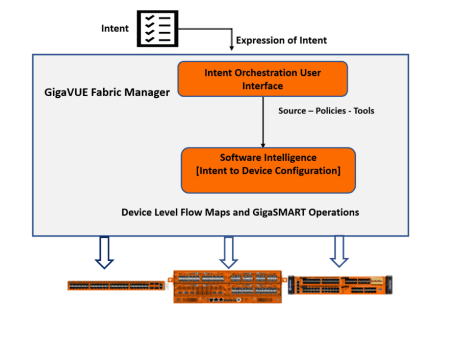In the ever-evolving landscape of IT infrastructure management, maintaining consistent and efficient system configurations is essential. This is where Configuration Management vs Configuration Orchestration comes into play. While these two approaches share a common objective, they diverge in their scope and methodologies.
Configuration Management focuses on individual systems, ensuring stability, compliance, and control. It offers tools and practices to manage changes and maintain desired states. On the other hand, Configuration Orchestration extends beyond individual systems, orchestrating configuration changes across distributed infrastructures. It automates and synchronizes configurations, simplifying management in complex environments.
In this blog post, we delve into the intricacies of Configuration Management vs Configuration Orchestration, exploring their purposes, features, scalability, adaptability to dynamic environments, and complexities. Understanding these distinctions will empower IT professionals to make informed decisions in choosing the right approach for their infrastructure management needs.
What is Configuration Management?
Configuration management is a discipline in software engineering that focuses on managing and controlling the configuration of software systems or any other complex system. It involves establishing and maintaining consistency and integrity throughout the system’s life cycle by identifying, organizing, and controlling the configuration items (CIs) that compose the system.
The primary goal of configuration management is to ensure that a system’s configuration remains stable and well-documented, regardless of changes or updates made during its development, deployment, or maintenance. This includes managing not only the software code but also the associated documentation, hardware components, network configurations, and other relevant assets.
What is Configuration Orchestration?

Configuration orchestration refers to the process of managing and coordinating the configuration of multiple systems or components within a complex infrastructure or application environment. It involves automating the deployment, configuration, and coordination of various software and hardware components to ensure they work together seamlessly.
In modern IT environments, there is a need to manage configurations across multiple servers, virtual machines, containers, networking devices, and other components. Configuration orchestration helps streamline this process by providing a centralized platform or toolset to define, deploy, and manage configurations consistently and efficiently.
Configuration Management vs Configuration Orchestration-pros
Pros of Configuration Management
Consistency and Standardization: Configuration Management ensures consistency and standardization across software systems, environments, and infrastructure components. It provides a systematic approach to managing configurations, enforcing standards, and reducing configuration drift. This leads to more reliable and predictable systems.
Version Control and Change Tracking: For configuration objects, version control, and change tracking are enabled by configuration management solutions. This allows you to keep track of changes made to configurations, roll back to previous versions if necessary, and easily identify the cause of issues or bugs.
Faster Deployment and Release Management: By automating the deployment and release processes, Configuration Management enables faster and more efficient deployments. It guarantees that the appropriate configuration is consistently implemented across many environments, lowering the likelihood of mistakes and speeding up the release cycle.
Improved Collaboration: Configuration Management facilitates collaboration among teams by providing a centralized repository for configurations and a framework for managing changes. It allows different teams to work concurrently on different components while ensuring their configurations remain compatible and synchronized.
Risk Reduction and Compliance: Configuration Management helps mitigate risks associated with system changes and ensure compliance with regulatory and security requirements. It provides visibility into configuration changes, enables proper testing and validation processes, and facilitates auditing and documentation.
Pros of configuration orchestration
Automation and Consistency: Configuration orchestration enables the automation of infrastructure provisioning, deployment, and management processes. It allows you to define infrastructure configurations in code, specifying the desired state of your infrastructure. This ensures consistency across environments, eliminates manual configuration tasks, and reduces the risk of human errors.
Scalability and Flexibility: You can simply scale your infrastructure up or down in response to demand with configuration orchestration. You can define infrastructure templates or configuration scripts that can be easily replicated and deployed to multiple instances or environments. This enables rapid scalability and provides the flexibility to adapt to changing business needs.
Version Control and Change Management: Configuration orchestration tools often integrate with version control systems, allowing you to track and manage changes to your infrastructure configurations. You can keep track of infrastructure alterations, go back to earlier versions if necessary, and implement sound change control procedures. Improved audibility, cooperation, and traceability result from this.
Faster Deployment and Time-to-Market: Automation of the provisioning and configuration of infrastructure resources using configuration orchestration speeds up the deployment procedure. This reduces the time required for manual setup and configuration, allowing you to deploy infrastructure more quickly. It enables faster time-to-market for applications and services, giving you a competitive edge.
Infrastructure as Code Paradigm: Configuration orchestration promotes the Infrastructure as Code paradigm, treating infrastructure configurations as software code. By doing this, infrastructure management gains the advantages of software development practices like version control, testing, and code review. It allows for collaboration between development and operations teams, bringing them closer together and fostering a DevOps culture.
Configuration Management vs Configuration Orchestration-cons
Cons of Configuration Management
Initial Setup and Learning Curve: Implementing Configuration Management requires initial setup and investment of time and resources. There may be a learning curve associated with adopting new tools, processes, and workflows. Training and onboarding team members to effectively use Configuration Management tools and practices can take time and effort.
Complexity and Overhead: Configuration Management systems can introduce additional complexity to the development and deployment processes. Managing configurations, version control, and change tracking can add overhead and increase the overall complexity of the system. The advantages of configuration management and the extra complexity it adds must be balanced for organizations.
Cost: Depending on the specific tools and infrastructure requirements, there may be costs associated with Configuration Management. Licensed tools, cloud infrastructure costs, and maintenance expenses can impact the overall budget. Organizations should carefully consider the cost-benefit analysis before adopting Configuration Management solutions.
Resistance to Change: Introducing Configuration Management practices may face resistance from team members who are accustomed to traditional manual approaches. Some individuals may be hesitant to adopt new tools or change their established workflows. Addressing resistance to change requires effective communication, training, and demonstrating the benefits of Configuration Management.
Tooling and Compatibility: Choosing the right Configuration Management tool and ensuring compatibility with existing systems and infrastructure can be challenging. Different tools have varying capabilities, integrations, and learning curves. It’s essential to evaluate and select a tool that aligns with the organization’s requirements and technology stack.
Cons of Configuration Orchestration
Complexity and Learning Curve: Configuration orchestration tools and frameworks can be complex, requiring a learning curve for teams to effectively utilize them. Developers and operations personnel may need to learn new programming languages, infrastructure provisioning techniques, and tool-specific syntaxes. This learning process can take time and may slow down initial implementation.
Tool and Framework Selection: Choosing the right configuration orchestration tool or framework can be challenging. There are several choices, each with unique advantages, disadvantages, and compatibility needs. Evaluating and selecting the most suitable tool for the organization’s specific needs and technology stack can be a time-consuming and complex process.
Infrastructure as Code Challenges: Treating infrastructure as code introduces a new set of challenges. Managing infrastructure configurations through code can be more complex than traditional manual approaches, especially for larger or more complex systems. Developers need to have a solid understanding of infrastructure concepts and best practices to ensure effective and efficient configurations.
Code Complexity and Maintenance: Infrastructure code can become complex as systems grow, leading to increased maintenance efforts. Code refactoring, version control, and maintaining proper documentation can become more challenging as the infrastructure codebase expands. Proper code organization, modularization, and testing practices are necessary to manage code complexity effectively.
Dependency Management and Compatibility: Infrastructure components often have dependencies on each other, such as databases, networks, or external services. Managing these dependencies and ensuring compatibility between different components can be complex. Version mismatches, incompatible configurations, or updates in external dependencies can lead to unexpected issues or failures.
Configuration Management vs Configuration Orchestration-key difference
| Elements | Configuration Management | Configuration Orchestration |
| Definition | Process of managing and controlling configurations of systems and software. | Approach to managing infrastructure as code, automating provisioning and configuration processes. |
| Focus | Manages configurations of individual systems or software components. | Orchestrates provisioning and configuration of the entire infrastructure or environment. |
| Scope | Primarily focuses on software configurations and system settings. | Manages infrastructure configurations, including networks, servers, and cloud resources. |
| Granularity | Works at a granular level, managing individual configuration items. | Works at a higher level, managing infrastructure as code with templates or scripts. |
| Level of Automation | Manual or partially automated processes for configuration management. | Highly automated processes for infrastructure provisioning and configuration. |
| Change Management | Ensures consistency and control of configuration changes across systems. | Enforces version control and change tracking for infrastructure configurations. |
| Deployment Speed | May involve manual configuration steps, leading to slower deployment cycles. | Automates provisioning and configuration, enabling faster and more efficient deployments. |
| Scalability | May lack scalability for managing large-scale infrastructures. | Enables easy scaling of infrastructure by defining and replicating configurations as code. |
| Collaboration | Supports collaboration among teams for managing configurations. | Encourages collaboration between development and operations teams through Infrastructure as Code practices. |
| Portability | Less emphasis on portability across different environments or cloud providers. | Emphasizes portability, allowing consistent infrastructure provisioning across various environments and cloud platforms. |
| Legacy Systems | Suitable for managing configurations of both modern and legacy systems. | May require additional effort to integrate with legacy systems and adapt existing configurations. |
Configuration Management vs Configuration Orchestration-Detailed Comparison
In modern IT environments, managing and maintaining the configurations of various systems and applications is crucial for ensuring stability, consistency, and efficiency. Two key approaches used in this domain are Configuration Management vs Configuration Orchestration.
While they share similarities in their objectives, they differ in their scope, purpose, methodology, features, scalability, adaptability to dynamic environments, and complexity. This article provides a detailed comparison of these two approaches.
Configuration Management vs Configuration Orchestration: Scope
Configuration Management primarily focuses on the management of individual system configurations. It involves tracking and controlling changes to system settings, files, and software packages. It aims to establish a stable and controlled environment, ensuring that systems are in a desired state and remain compliant with defined standards.
On the other hand, Configuration Orchestration extends beyond individual systems and encompasses the management and coordination of configurations across multiple systems or clusters. It enables the automation and synchronization of configuration changes across a distributed infrastructure, simplifying the management of complex environments.
Configuration Management vs Configuration Orchestration: Purpose
Configuration Management aims to maintain consistency and reliability in system configurations. It focuses on ensuring that each system is correctly configured and remains desired over time. It facilitates system monitoring, troubleshooting, and recovery by providing a baseline for comparison and rollbacks.
Configuration Orchestration, on the other hand, has a broader objective of managing configurations at scale. It aims to automate the provisioning, deployment, and management of configurations across a large number of systems or clusters. Its purpose is to streamline the configuration process, reduce manual effort, and improve efficiency in dynamic environments.
Configuration Management vs Configuration Orchestration: Methodology
Configuration Management typically follows a declarative approach, where administrators define the desired state of a system and the configuration management tool ensures that the system matches that state. Changes are made by defining configuration files or scripts and applying them to the target systems. Ansible, Puppet, and Chef are a few common configuration management tool examples.
Configuration Orchestration employs an imperative approach, focusing on the sequence of actions required to achieve a desired state across multiple systems. It involves scripting or programming the orchestration tool to execute specific tasks and coordinate configuration changes across a distributed infrastructure. Tools like Kubernetes, Docker Swarm, and Apache Mesos are commonly used for configuration orchestration.
Configuration Management vs Configuration Orchestration: Features
Configuration Management tools offer features like configuration drift detection, change tracking, version control, and auditing. They provide robust reporting capabilities and offer centralized control and visibility over system configurations. These tools excel in managing static environments and maintaining consistent configurations over time.
Configuration Orchestration tools, on the other hand, emphasize features like service discovery, scaling, load balancing, and automated provisioning. They enable the dynamic allocation of resources, manage high availability, and facilitate the deployment and scaling of applications across clusters. These tools are designed for highly dynamic and scalable environments, such as cloud infrastructures.
Configuration Management vs Configuration Orchestration: Scalability
Configuration Management is well-suited for small to medium-sized environments with a limited number of systems. It provides a reliable method for maintaining consistency and control in static or slowly changing infrastructures. However, as the number of systems increases, Configuration Management may become more complex to manage and scale efficiently.
Configuration Orchestration, on the other hand, excels in large-scale environments with hundreds or thousands of systems. It provides the automation and coordination capabilities required to manage and synchronize configurations across distributed infrastructure. Orchestration tools can handle the complexity and scale of dynamic and rapidly changing environments.
Configuration Management vs Configuration Orchestration: Dynamic Environments
Configuration Management is effective in environments where configurations change infrequently and the systems remain relatively stable. It ensures that each system adheres to a known baseline and can be reverted to a known state if needed. However, it may require manual intervention or additional tooling to handle frequent changes or dynamic infrastructures.
Configuration Orchestration is designed to handle dynamic and rapidly changing environments. It enables the automatic deployment and configuration of systems, making it well-suited for cloud-based or containerized environments. Orchestration tools provide the flexibility and adaptability needed to manage configurations in highly dynamic scenarios.
Configuration Management vs Configuration Orchestration: Complexity
Configuration Management is generally simpler to implement and manage compared to Configuration Orchestration.
It focuses on individual systems and provides a straightforward way to ensure consistency and control. However, as the number of systems and complexity of the infrastructure increases, the management overhead may grow, necessitating more advanced configuration management practices.
Configuration Orchestration, due to its broader scope and distributed nature, tends to be more complex. It involves familiarity with orchestration technologies, proficiency with scripting or programming, and knowledge of distributed systems. Orchestrating configurations across multiple systems demands careful planning, coordination, and the ability to handle failure scenarios.
Conclusion
In conclusion, both Configuration Management vs Configuration Orchestration play critical roles in managing system configurations, but they cater to different needs.
Configuration Management is ideal for maintaining individual system configurations and ensuring consistency and control in static or slowly changing environments.
On the other hand, Configuration Orchestration excels in large-scale, dynamic environments by automating and synchronizing configurations across distributed infrastructure. The environment’s size, complexity, and dynamism will determine which option is best.
By understanding their differences, organizations can make informed decisions to effectively manage and orchestrate their configurations, ensuring stability, scalability, and efficiency in their IT operations.












